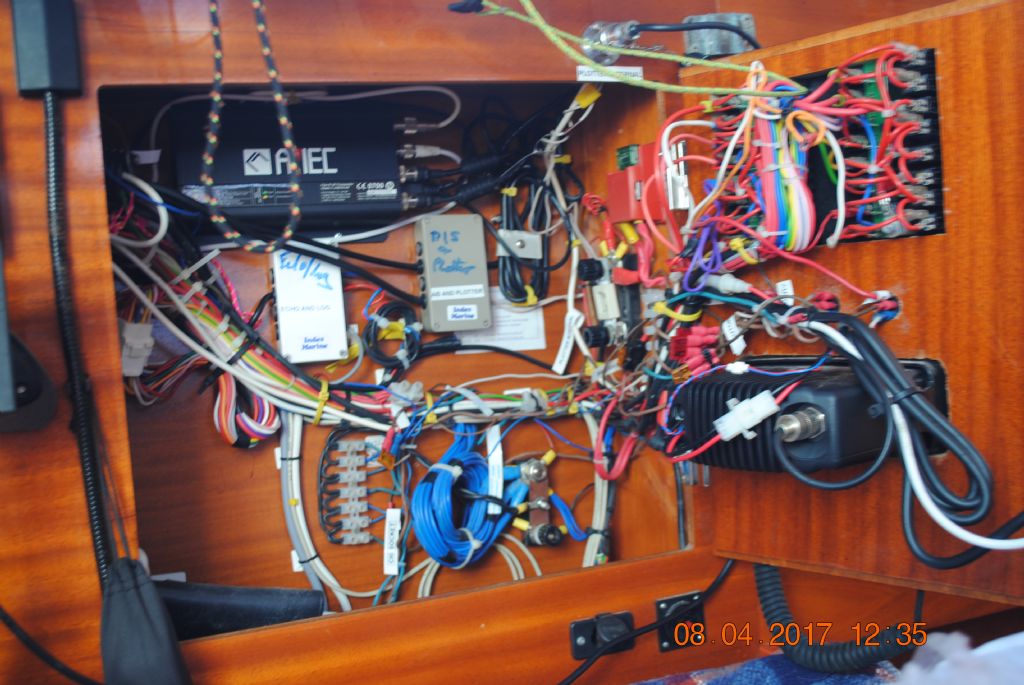Posted by SteveW on 13/10/2017 18:55:11:
I would second the idea of a dedicated battery for anything critical. Short leads, few connections, wiring easy to check or replace, just one switch. Fewer components = more reliable.
Steve
I have a pair of AGM domestic batteries 800mm from the electric cupboard with a red flash starter battery.
the AGM's normally sit between 12.8 & 13 V in operation & 14.4V when under charge. I do not believe that they are faulty as they are fairly new & hold the charges for weeks in the winter without topping up the charge. This is the cupboard from where the autopilot wiring starts it then goes down behind ducts & panels to the stern of the boat via a tortuous route !! 90% of the wiring is manufacturer installed– without any wiring diagrams I might add. I have only installed the AIS, & renewed the compass, Echo sounder & log & supply to autopilot & log – that is why they kick off from junction boxes & a plotter reserve plug- top right in picture

Edited By Sam Longley 1 on 13/10/2017 20:51:07
Edited By Sam Longley 1 on 13/10/2017 20:55:09
Phil Whitley.





